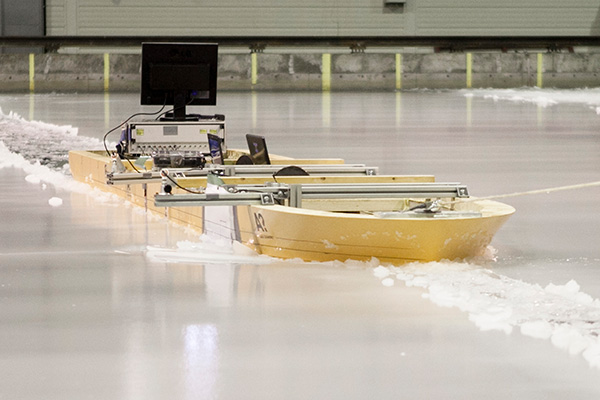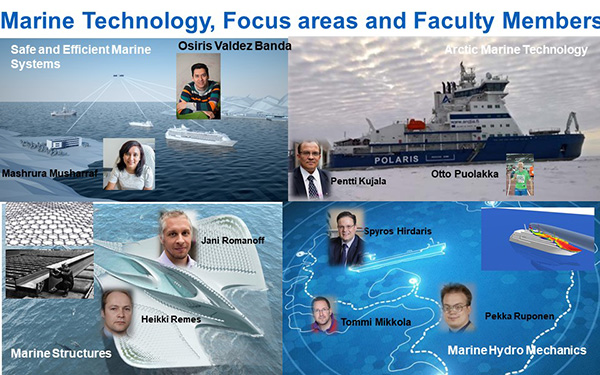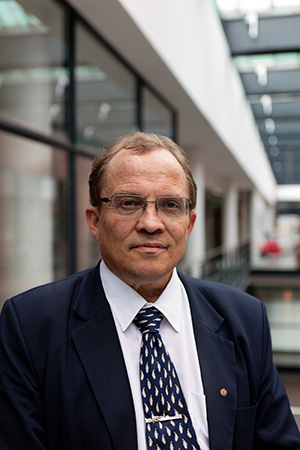Environment
Equipment
Systems
Aalto University's master program
Optimised for passenger and arctic vessel designers

For engineering students’ intent on designing ships either for
passenger transport or for arctic environments, a Finnish university
degree is the grade to go for. Aalto University’s top-notch Nordic
Master program has drawn in motivated and capable students even
from distant continents.
Aalto University’s Nordic Master
program in Maritime Engineering
was started more than a decade ago to
market the traditional marine technology
master program also to other Nordic
Universities.
”In addition to Aalto University
from Finland, students will study to complete
the degree at either Chalmers University
of Technology in Sweden, DTU in
Denmark, or NTNU in Norway,” says Mr.
Pentti Kujala, Professor of Marine technology.
He has also been the head of Marine
Technology research group at Aalto University
and the Vice Dean of the School
of Engineering.
”Nordic cooperation between universities
is a long-time tradition, dating
back to 1948.”

Nordic master students and few teachers in Otaniemi when starting the studies.
International cooperation
Mr. Kujala has a long experience of working
on the safety of ships both in open
water and in ice, including full scale measurements of ice induced loads and analysis
of the ice load statistics, simulation
of ship performance in ice, development
of advanced structural solutions for ships
and development of system level safety of
marine traffic.
Also, he has extensive national and
international cooperation heading the
Center of Excellence for safe Arctic shipping
funded by Lloyd’s Register Foundation
from London.
”The most significant developmental
trend in this study program is that we
are now attracting highly motivated students
from around the world, even from
the U.S. Furthermore, curriculums for the
program have been thoroughly thought
out between the participating universities,”
Kujala explains.
From 2022 onwards, Aalto University
is in charge of curriculum profiling.

Marine Techology research focus areas with 6 full-time and 1 part time professors .
Courses in four countries
Among other things, the Nordic Master
program includes principles within
the design, construction and operation
of ships and offshore structures, including
their hydrostatics and stability, hydrodynamics,
wave, wind and ice loads, and
structural analyses.
structural analyses.
Studies include lectures, assignments,
workshops and project work. Theory
is supported by experimental work and
computer simulations are intensively used.
In your first year, students study master’s-
level topics within maritime engineering,
naval architecture and offshore engineering.
They include stability, resistance
and propulsion, seakeeping, manoeuvring
and ship and ocean structures.
and ship and ocean structures.
In the second year, studies are concentrated
on the student’s chosen specialisation:
ocean structures, passenger ships,
arctic ship design, ship operations or small
craft.
For instance, Aalto University in Finland
specialises in passenger ships and arctic
technology, while Chalmers in Gothenburg
will teach ship design.
Before applying, students need to
have a suitable B.Sc. degree and a basic
knowledge of related technologies.
Big data in major role
”Additionally, the subject of Big Data has
to be taken into account in maritime engineering
studies,” Kujala points out.
The term ’Big Data’ refers to huge
amounts of telemetry and measurement
data being acquired, stored, and analysed,
in order to gain a more complete picture of
hardware reliability, positioning, or other
safety-related issues.
”To further develop maritime studies
related to information technologies and
Big Data, Aalto University has recruited
professor Mashrura Musharraf from
Canada.
She has a lot of experience of
maritime research, digitalisation, and Big
Data applications.”
According to Kujala, Mrs. Musharraf
will bring new insight into teaching
automation, AI, machine learning and
ship safety to maritime engineering
students.
Aalto University now has a total of
six professors teaching on the Nordic Master
program.
program.
Overall, maritime safety issues are
high on the list of crucial subjects on the
curriculum.
curriculum.
”This is where modern electronics
and Big Data applications come in handy,”
notes Kujala.
”A lot of progress has been made in
the fields of collision avoidance, distance
measurement and tracking, and automated
warning messaging. These are additional
tools for the conning bridge.”

Mr. Pentti Kujala, Professor of Marine technology says that cooperation between Nordic schools dates as back as 1948.
”Basic navigation and radar technologies
are now being complemented
by satellite and positioning data. What’s
more, the collected data can now be utilised
more efficiently than before.”
On some of these subjects, Aalto
University’s maritime research personnel
is working in close cooperation with the electronics & automation lab of the same
campus.
Best knowledge from Finnish universities
Due to the global Covid-19 pandemic, a
large portion of Nordic Master studies
have been implemented through remote
learning over the Internet during the last
two years.
”We now usually record the lectures
on video. After viewing, some subjects
may be perused with the students more
thoroughly,” says Kujala.
”Some kind of hybrid teaching will
be continued even after the pandemic as
it has proved practical and useful.”
”The Master’s thesis has to fulfil the
requirements of two different universities.”
According to Kujala, Finnish universities
are the best among those offering
studies in maritime engineering.
”The development of ship concepts
and prototypes, hull structure optimisation,
maritime safety and operating in icy
conditions – these are subjects that are
particularly well known over here. We
have received plenty of good feedback
from our international students,” Kujala
mentions.
by: Ari Mononen
photos: Aalto University



